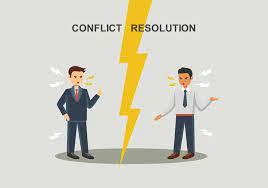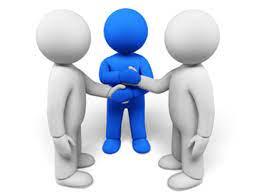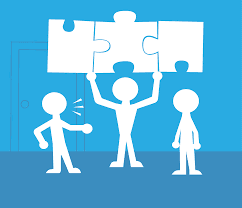The Five Steps to Conflict Resolution
Curated from: amanet.org
Ideas, facts & insights covering these topics:
8 ideas
·1.08K reads
9
Explore the World's Best Ideas
Join today and uncover 100+ curated journeys from 50+ topics. Unlock access to our mobile app with extensive features.
The Five Steps to Conflict Resolution for Managers
This mediation process works between groups as well as individuals.
“We don't get harmony when everybody sings the same note. Only notes that are different can harmonize. The same is true with people.”
-Steve Goodier
15
237 reads
Conflict Resolution Defined
The definition of conflict resolution is to resolve an issue or problem between two or more people, but is there a correct way to handle conflict? What are the effects of poor conflict management? Disagreements in the workplace are inevitable, as employees have different personalities, goals, and opinions.
13
163 reads
Step 1: Define the source of the conflict.
The more information you have about the cause of the problem, the more easily you can help to resolve it. As a manager or supervisor, you need to give both parties the chance to share their side of the story. It will give you a better understanding of the situation, as well as demonstrate your impartiality. As you listen to each disputant, say, “I see” or “uh huh” to acknowledge the information and encourage them to continue to open-up to you.
14
144 reads
Step 2: Look beyond the incident.
Often, it is not the situation but the point of view of the situation that causes anger to fester and ultimately leads to a shouting match or other visible and disruptive result. The source of the conflict might be a minor issue that occurred months before, but the level of stress has grown to the point where the two parties have begun attacking each other personally instead of addressing the real problem. In the calm of your office, you can get them to look beyond the triggering incident to see the real cause.
15
119 reads
Step 3: Request solutions.
After getting each party’s viewpoint, the next step is to get them to identify how the situation could be changed. Again, question the parties to solicit their ideas: “How can you make things better between you?” As mediator, you have to be an active listener, aware of every verbal nuance, as well as a good reader of body language. You want to get the disputants to stop fighting and start cooperating, and that means steering the discussion away from finger pointing and toward ways of resolving the conflict.
15
103 reads
Step 4: Identify solutions both disputants can support.
You are listening for the most acceptable course of action. Point out the merits of various ideas, not only from each other’s perspective, but in terms of the benefits to the organization. For instance, you might suggest the need for greater cooperation and collaboration to effectively address team issues and departmental problems.
15
121 reads
Step 5: Agreement.
The mediator needs to get the two parties to shake hands and accept one of the alternatives identified in Step 4. The goal is to reach a negotiated agreement. Some mediators go as far as to write up a contract in which actions and time frames are specified. However, it might be sufficient to meet with the individuals and have them answer these questions: “What action plans will you both put in place to prevent conflicts from arising in the future?” and “What will you do if problems arise in the future?
14
83 reads
Constructive Management Approach
“Conflict can and should be handled constructively; when it is, relationships benefit. Conflict avoidance is *not* the hallmark of a good relationship. On the contrary, it is a symptom of serious problems and of poor communication.”
-Harriet B. Braiker
15
113 reads
IDEAS CURATED BY
CURATOR'S NOTE
Collaborative effort equals enhanced quality of life and work.
“
Tom Joad's ideas are part of this journey:
Learn more about leadershipandmanagement with this collection
How to create a successful onboarding process
Why onboarding is crucial for customer retention
How to measure the success of onboarding
Related collections
Similar ideas
9 ideas
Conflict Resolution Strategies & Techniques for the Workplace
positivepsychology.com
3 ideas
6 Ways to Transform Conflict
michaelhyatt.com
Read & Learn
20x Faster
without
deepstash
with
deepstash
with
deepstash
Personalized microlearning
—
100+ Learning Journeys
—
Access to 200,000+ ideas
—
Access to the mobile app
—
Unlimited idea saving
—
—
Unlimited history
—
—
Unlimited listening to ideas
—
—
Downloading & offline access
—
—
Supercharge your mind with one idea per day
Enter your email and spend 1 minute every day to learn something new.
I agree to receive email updates








